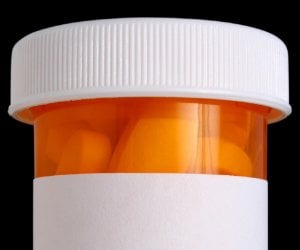Last Updated on June 26, 2022 by Laura Turner
Updated November 15, 2021. The article was updated to correct minor grammatical errors and to update formatting.
Substance abuse is not too high on the list of worries for many American medical students. However, recent studies have shown that the misuse of both prescription and street drugs and alcohol might be more widespread in medical school than previously recognized. This article looks at the phenomenon of drug use in medical school, what medical schools are doing to combat this issue, and what more needs to be done in the future to ensure that schools are matriculating physicians who are unimpaired by substance abuse disorders.
Examining the Phenomenon of Drug Use in Medical School
Before taking steps to solve substance abuse in medical school, it is important to understand why it has so many people concerned, how widespread this issue is, and the risk factors that make abuse more likely.
Why this is a Concern
Researchers note the obvious concerns surrounding the phenomenon of impaired physicians-in-training: they are a danger to themselves, their patients, and to other members of the healthcare team. Despite these issues, students are often reluctant to self-refer for treatment or to report suspected colleagues to the people in authority. Much of this reluctance stems from the fear of the consequences of this reporting, a belief that the problem is not as serious as it is, or failure to recognize the problem in the first place.
Just How Widespread Is This Problem?
Determining how widespread this problem is can be difficult. Mostly this is because while there are many studies done on the problem of drug abuse among doctors, far fewer have looked at this phenomenon among medical students.
In one review—entitled Substance Abuse among Physicians and Medical Students studies were analyzed from the National Library of Medicine (NLM) and the National Institutes of Health (NIH). The reviewers found that there were so few studies in this area that a deep analysis of the issue was impossible. They did note, however, that even studies that seemed to indicate that rates of use were actually slightly lower in the medical student population found that students did report current or past use of alcohol, marijuana, psychedelic drugs, tranquilizers, and opioids. Often, however, it was found that this abuse started before students began their medical studies, while students were still in high school or college. This indicated to the authors that the stress of medical school may not be as major a factor as was originally hypothesized. They recommend that more funding go to support understanding of this particular problem.
One study, however, looked at patterns of drug abuse among one particular group of medical students—those studying anesthesiology. The study found that, when analyzing the rates of use among these students between 1975 and 2009, 2009 had the greatest number of users. These rates have been increasing slowly but steadily since 2003. The drugs of choice in order of popularity were fentanyl, alcohol, benzodiazepines, marijuana, and cocaine. The rates of abuse were highest in men. It was also noted that, of those who reported substance abuse, 69% completed their training and 51% became board certified in anesthesiology.
Authors of this study noted that “To our knowledge, this report provides the first comprehensive description of the epidemiology and outcomes of substance abuse disorder for any in-training physician specialty group, showing the incidence of substance abuse disorder has increased over the studied period and that relapse rates are not improving”.
This is not just a problem among certain specialty groups, however. Another study, entitled Cognitive Enhancement Drug Use among Future Physicians, found fairly widespread use of stimulants among the general medical student population. This study was conducted via a confidential online survey and the survey found that 18% of respondents had used such stimulants at least once in their lifetime and 11% had been using it since beginning medical school. Of those that admitted to drug use, 71% reported that it was for purposes of cognitive enhancement to study and achieve good grades. Many others expressed that they were comfortable with the use of drugs such as barbiturates and tranquilizers in order to relax and study better.
This is not the only research that has found the pressure to achieve good grades is a powerful driver for drug use. A 2013 study, Stimulant Use Exceptionally High among Medical Students, surveyed third-year medical students and found that 20% of them had used stimulants at one point in their lives, and 15% had used them during their years as medical students. Drugs of choice included methylphenidate, dexmethylphenidate, amphetamine salts, and dextroamphetamine. Researchers also found that 75% of students surveyed believed that the use of these drugs could enhance academic performance, even among those who had not used them.
Risk Factors for Abuse
Researchers working on the previously mentioned review noted that one important aspect of the study looked at the factors that put medical students at greater risk for abuse. They noted that, among the studies they did find, several themes kept recurring:
● The medical school experience. Medical school is inevitably a time of stress, with long hours, lack of sleep, and a tendency towards unhealthy diets and little exercise. However, a poor diet, sleep deprivation, and a sedentary lifestyle are also among the very things which can make it more likely that a student will begin to use substances to cope.
● Extreme educational and professional goals. Many medical students are goal-driven, assertive, Type-A personalities. They tend to put a high degree of pressure on themselves to achieve their academic and professional goals. This pressure, however, is considered to be another risk factor for a substance abuse disorder.
● The stress of patient care. Although interaction with patients is often reported as one of the most rewarding experiences among many physicians, it can also be one of the most stressful, particularly with terminal or very difficult patients. This stress can lead to burnout over time, and burnout in turn can lead to the use of drugs as a way to cope.
● Reluctance to report or self-report. Many studies have noted that reluctance on the part of students to report on colleagues or substance users to admit to their problem can easily allow the problem to continue untreated, putting both the student and their patients at risk.
● Emotional distress. Emotional distress related to life changes such as divorce or relocation was also found to predispose students towards substance abuse.
One interesting look at risk factors for substance, however, found that certain personality traits among students also were associated with drug use. This study used the Zuckerman-Kuhlman Personality Questionnaire and the Jefferson Scale of Empathy in order to assess a group of 321 medical students. 14% of respondents reported the use of drugs either before or during medical school. What was most interesting to the researchers, however, was that aggressive, hostile personality traits were strongly linked to this use. A link, though weaker, was also found between drug use and impulsive and thrill/sensation-seeking personality traits.
What Has Been and Should Be Done to Address this Problem
While more studies are needed on this phenomenon, it is clear from what research is available that action should be taken to help combat this problem. This section of the paper looks at what changes medical schools have implemented to address these problems—and what needs to be done in the future.
How Medical Schools are Reacting to this Problem
Though drug use among physicians-in-training has been going on for years, it is only fairly recently that medical schools have taken concrete steps to help deal with this issue. Many, if not all, medical schools in America have incorporated student substance use into their policies and procedures manuals and added them to the student handbook.
One feature of many medical school handbooks is that medical students who suspect that a fellow student may have a problem with substance must report this suspicion to the proper authority. In most cases, this usually is a staff member from Student Health Services. Again, however, schools administrators trying to get a handle on this issue are bumping up against the problem of reluctance on the part of students to report on their colleagues.
Recognizing that the fear of stigma is another significant barrier to seeking help, many universities have also developed programs wherein students may self-refer confidentially if they are struggling with substance abuse. The school will then help them to receive the treatment that they need in order to get back on track with their medical education. Some schools have also taken the step of divorcing the teaching faculty from faculty with more “pastoral” obligations so that students will feel more comfortable discussing the issues without fear of their professors viewing them as weak or unfit to become doctors.
What More Needs to Be Done
Drug use policy is now a standard part of medical school student handbooks. However, researchers note that medical schools could make these policies even stronger by adopting them across the board so that these policies would be consistent between one institution and another. This would, of course, require a high degree of cooperation among the various institutions to make sure that these anti-drug policies were in line with one another.
Another suggestion is increased medical student education about the effects that substance abuse disorders can have not only on their minds and bodies but on their academic success and future careers. Emphasizing the responsibility of each medical student to report even suspected abuse in a colleague and also on recognizing the signs and symptoms of this disorder are also important. This education would be even more effective if combined with classes or lectures on self-care and coping with stress so that some of the risk factors for abuse can be alleviated.
Perhaps the most strident challenge facing medical schools, however, is that of destigmatizing substance abuse and truly treating it as a disease rather than as a character flaw of psychological weakness. It is this stigma that is often the most stringent barrier between the student and the resources that are available to get them the help they need.
In short, although inadequate research has been done on the subject, what existing studies have indicated is that substance use among medical students may be more widespread than was recognized in the past. This has implications for the safety of the student as well as the patients that he or she is treating – and ultimately for the integrity of the medical schools themselves. However, as more schools come to grips with this problem, more programs and resources should become available to ensure that currently matriculating doctors are free from substance abuse disorders.
Brian Wu, MD, Ph.D., MNM, graduated from the University of Maryland with a Bachelor’s of Science in Physiology and Neurobiology, and graduated from the Keck School of Medicine (University of Southern California) with an MD with a focus on holistic care and treatment. He currently holds a Ph.D. in integrative biology and disease for his research in exercise physiology and rehabilitation.


